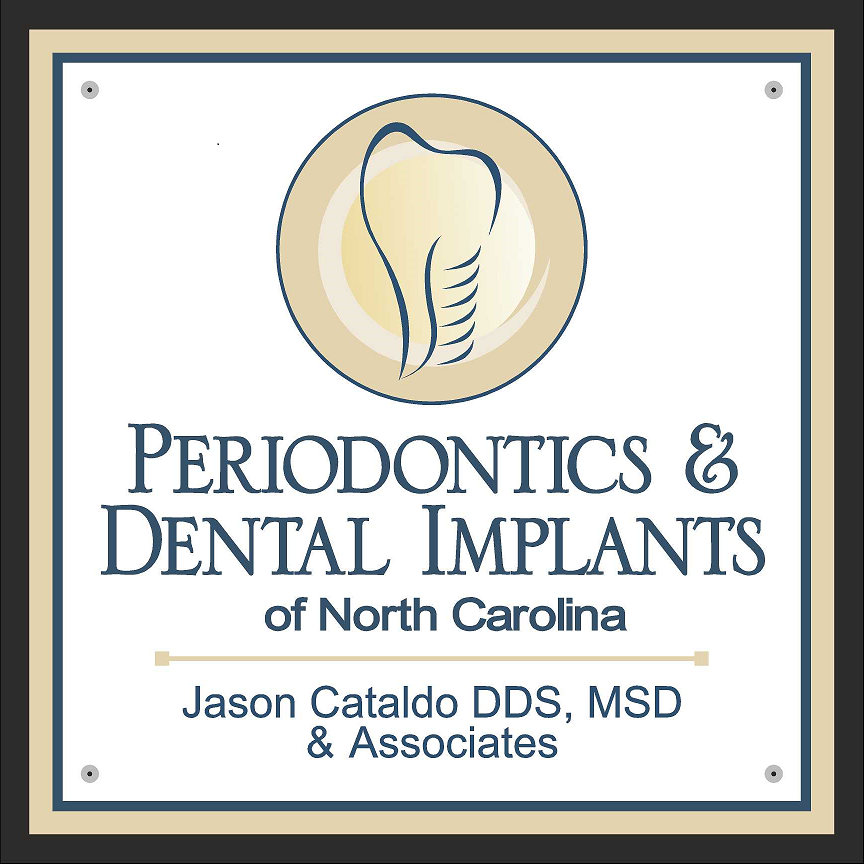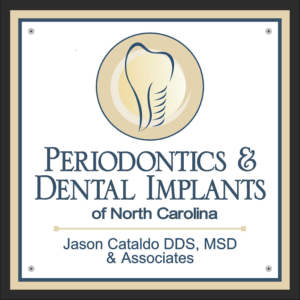Importance of Gum Recession Treatment - Morrisville, Durham, & Raleigh, NC
Rejuvenate Receding Gums for a Healthier Smile

Protect Your Smile with Healing Gum Recession Treatment
Gum recession results in protective gum tissue pulling back from your teeth or gradually wearing away, resulting in teeth that look longer. Underlying causes of gum recession include poor oral hygiene, periodontal disease, aggressive tooth brushing, orthodontic treatment, and bruxism (tooth grinding/clenching), but age, genetics, and tobacco use can also play a role. Receding gums expose more of your tooth roots, resulting in functional issues, including tooth sensitivity, pain, and even tooth loss in advanced cases.
Prompt gum recession treatment in Durham, NC, Raleigh, NC, and Morrisville, NC, provided by our skilled periodontist, can help prevent further damage and restore gum health. It’s important to seek timely treatment at Periodontics and Dental Implants of North Carolina if you have any signs of gum recession. A gum grafting procedure may not resolve the problem if gum recession is untreated for too long. Mild cases of gum recession may heal within a few weeks of treatment, while recovery for more advanced cases can take several months.

Signs of Gum Recession
- Visible tooth roots
- Increased tooth sensitivity to cold and heat
- Painful root cavities
- Longer-looking teeth
- A minor notch or indentation at the gum line
- Tooth loosening or loss (advanced cases)
Ceramic Dental Implants Deliver Life-Changing Benefits
While prescribed sparingly, specific antibiotics can reduce or temporarily destroy the bacteria responsible for gum disease. Antibacterial/antiseptic mouthwashes can be used at home in addition to regular oral hygiene practices to help prevent mild receding gums from worsening. These products kill oral bacteria and form a protective antibacterial layer over your teeth and gums to prevent plaque buildup for up to 12 hours.
Dental scaling and root planing reduce the risk of gum recession inflicting permanent damage by restoring healthier soft and hard tissue. During this procedure, we administer a local anesthetic to ensure your comfort. Then, we remove plaque and tartar from your teeth and move them down to the gum line. Then, we use a scaling tool to smooth the roots of your teeth, which helps gum tissue reattach to your teeth.
Gum graft surgery in Durham, NC, Raleigh, NC, and Morrisville, NC, is a mainstay gum recession treatment. However, the severity of your condition and how promptly it’s treated directly impact the outcome. During gum grafting surgery, our periodontist harvests tissue from an appropriate site in your mouth and then sutures it in the receding gums area. Over time, the area heals, and new gum tissue merges with existing tissue to restore function and appearance.
The Chao Pinhole Surgical Technique (PST™) is a minimally invasive alternative to traditional gum grafting surgery. A small hole is made in your gum tissue with a tiny needle, and then specialized instruments are used to loosen gently and reposition gum tissue over the exposed tooth roots.
PST doesn’t require scalpels or sutures and can be completed in a single visit. In addition to high success rates and a lower risk of complications, PST is more comfortable and results in faster recovery than traditional gum recession treatment at Periodontics and Dental Implants of North Carolina.
Laser-assisted new Attachment Procedure (LANAP) is a highly successful protocol for treating receding gums in Durham, NC, Raleigh, NC, and Morrisville, NC, which enhances the regeneration of new gum tissue around exposed tooth roots. LANAP is the only scientifically research-proven methodology that results in proper periodontal regeneration, new bone growth, and gum tissue reattachment.


